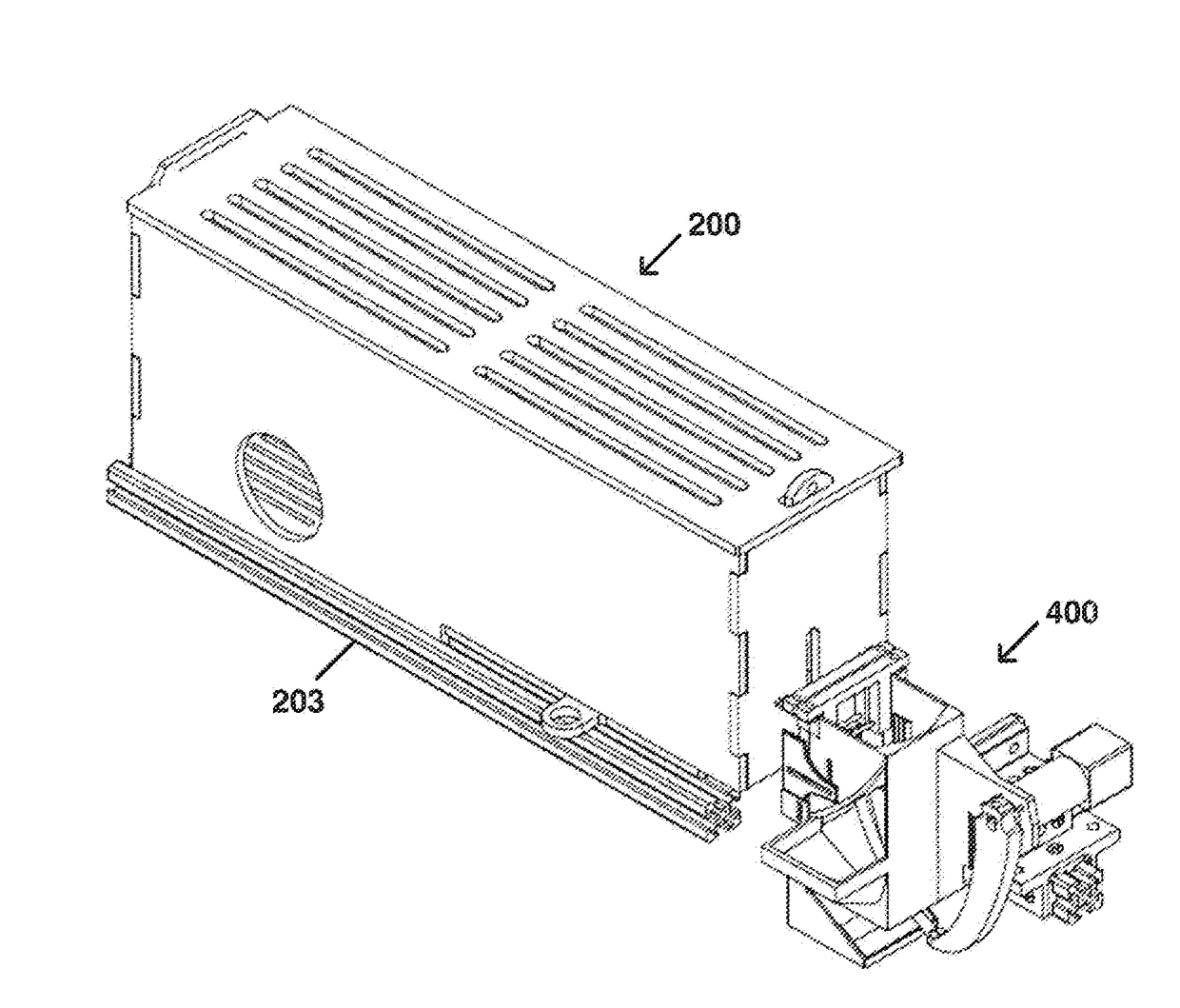Systems and methods for behavioral and task training of laboratory animals
a task training and behavioral technology, applied in the field of task training laboratory animals, can solve the problems of less than ideal training and data collection techniques, and the loss of motor control is sever
- Summary
- Abstract
- Description
- Claims
- Application Information
AI Technical Summary
Benefits of technology
Problems solved by technology
Method used
Image
Examples
Embodiment Construction
[0018]Skilled motor tasks are effective research methods for studying the neural control of skilled movement and motor recovery after nervous system injury and disease. There are a number of manually administered reaching and stepping tasks available for the study of forepaw movement in rodents including the Montoya staircase test, the well-grasping test, the Whishaw tray task, the horizontal ladder test, and the single pellet grasping (SPG) task. However, it can be difficult and time consuming to train animals to perform many of these tasks.
[0019]In the case of Montoya staircase testing, the rats must reach through slits in the right and left side of an enclosure to obtain pellets located in bowls at different depths relative to the slit openings. This test is higher throughput than manual SPG training and has the advantage of being able to compare effected to unaffected paw separately when using central nervous system (CNS) injury models. The Montoya staircase task is, however, a ...
PUM
 Login to View More
Login to View More Abstract
Description
Claims
Application Information
 Login to View More
Login to View More - R&D
- Intellectual Property
- Life Sciences
- Materials
- Tech Scout
- Unparalleled Data Quality
- Higher Quality Content
- 60% Fewer Hallucinations
Browse by: Latest US Patents, China's latest patents, Technical Efficacy Thesaurus, Application Domain, Technology Topic, Popular Technical Reports.
© 2025 PatSnap. All rights reserved.Legal|Privacy policy|Modern Slavery Act Transparency Statement|Sitemap|About US| Contact US: help@patsnap.com



